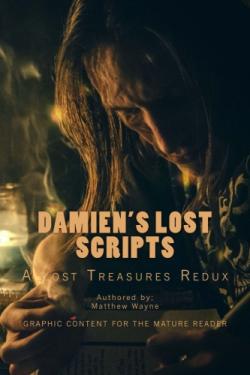I have been asked quite a few times mainly by amateur Artists and Authors about how they go about copyrighting their work. So I have decided to write up this quick editorial on the whole "copyright" notices and the like. First off, it's real simple. It's as simple as writing or creating something original and unique. Once it's made it's protected that simple. Changes in the law has made it extremely helpful for struggling artists to make sure their master pieces are protected under the same law that would protect big companies. In years past, to copyright something you actually had to go to the patent office and fill out forms and forms. Then it was discovered that if you wrote a book, took it to the post office and certified mailed it to yourself (without opening it) It would then be admissible in court.
Here are a few links to help those seeking more information on Copyright laws and a good place to start would be the http://www.copyright.gov/ Site.
http://www.wikihow.com/Make-a-Copyright-Notice
http://en.wikipedia.org/wiki/United_States_copyright_law
While copyright in the United States automatically attaches upon the creation of an original work of authorship, registration with the Copyright Office puts a copyright holder in a better position if litigation arises over the copyright. A copyright holder desiring to register his or her copyright should do the following:
- Obtain and complete appropriate form.
- Prepare clear rendition of material being submitted for copyright
- Send both documents to U.S. Copyright Office in Washington, D.C.
Registration of copyright refers to the act of registering the work with the United States Copyright Office, which is an office of the Library of Congress. As the United States has joined the Berne Convention, registration is no longer necessary to provide copyright protection. However, registration is still necessary to obtain statutory damages in case of infringement.
Copyright Act § 407 provides that the owner of copyright in a published or unpublished work may, at any time during the copyright, register the work with the Copyright Office. The purpose of the registration provisions is to create as comprehensive a record of U.S. copyright claims as is possible. To register, the registrant must complete an application form and send it, along with the filing fee and copies or phonorecords of the work, to the Copyright Office.
The Copyright Office reviews applications for obvious errors or lack of copyrightable subject matter, and then issues a certificate of registration.
Registration as a prerequisite to claim of moral rights violation: it's not necessary for any author to register prior to bringing suit for violation of the rights of attribution or integrity in a work of visual art, pursuant to Copyright Act § 106A.
Ownership of copyright
US law requires a copyright holder to establish ownership of a valid copyright and the copying of constituent elements of the work that are original.[53] Assuming the plaintiff proves ownership of a valid copyright, the holder must then establish both actual copying and improper appropriation of the work. The burden lies with the plaintiff to establish these three elements in what is known as the prima facie case for infringement. Copyright owners are required to actively enforce rights.
A plaintiff establishes ownership by authorship (by the plaintiff itself or by one who assigned rights to the plaintiff) of (1) an original work of authorship that is (2) fixed in a tangible medium (e.g. a book or musical recording). Registration is not required for copyright itself, but in most cases is a jurisdictional requirement to bring the suit. Registration is also useful because it gives rise to the presumption of a valid copyright, and eliminates the innocent infringement defense, and (if timely made) it allows the plaintiff to elect statutory damages, and to be eligible for a possible award of attorney fees.
Works that are not sufficiently original, or which constitute facts, a method or process cannot enjoy copy protection.[54] U.S. Courts do not recognize the "sweat of the brow" doctrine, which originally allowed protection for those who labored to collect and organize facts. To combat this, business which assemble databases of information have relied on contract law where copyright law offers no protection.[55] For a work to be original, it must possess a "modicum of creativity", which is a "low threshold" although some creativity must exist.[56]
Copyright protects the fixed expression of ideas, but not the ideas themselves.[57] Nevertheless, an expression must exist in a fixed tangible medium.[58] A movie script writer who discusses a plot idea which has not yet been written would not be protected if another heard his idea and wrote a screenplay themselves. Whether RAM constitutes a "fixed medium" is a contentious issue in copyright litigation because of the transitory nature of RAM.[59]
A plaintiff establishes actual copying with direct or indirect evidence. Direct evidence is satisfied either by a defendant's admission to copying or the testimony of witnesses who observed the defendant in the act. More commonly, a plaintiff relies on circumstantial or indirect evidence. A court will infer copying by a showing of a "striking similarity" between the copyrighted work and the alleged copy, along with a showing of both access and use of that access.[60] A plaintiff may establish access by proof of distribution over a large geographical area, or by eyewitness testimony that the defendant owned a copy of the protected work. Access alone is not sufficient to establish infringement. The plaintiff must show a similarity between the two works, and the degree of similarity will affect the probability that illicit copying in fact occurred in the court's eyes.[61] Even then, the plaintiff must show that the copying amounted to improper appropriation. Indeed, the US Supreme Court has held that not all copying constitutes infringement and a showing of misappropriation is necessary.
I do hope this helps anyone seeking information on copyrighting their art.
